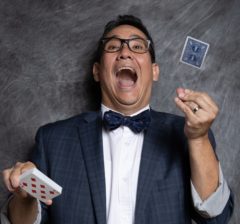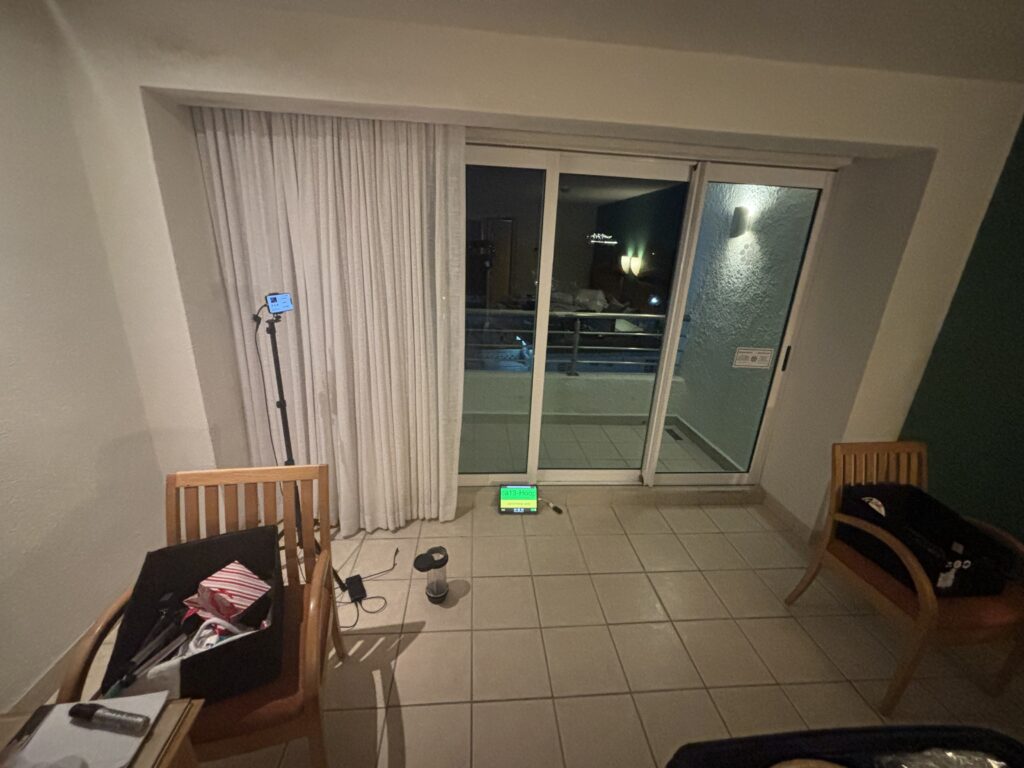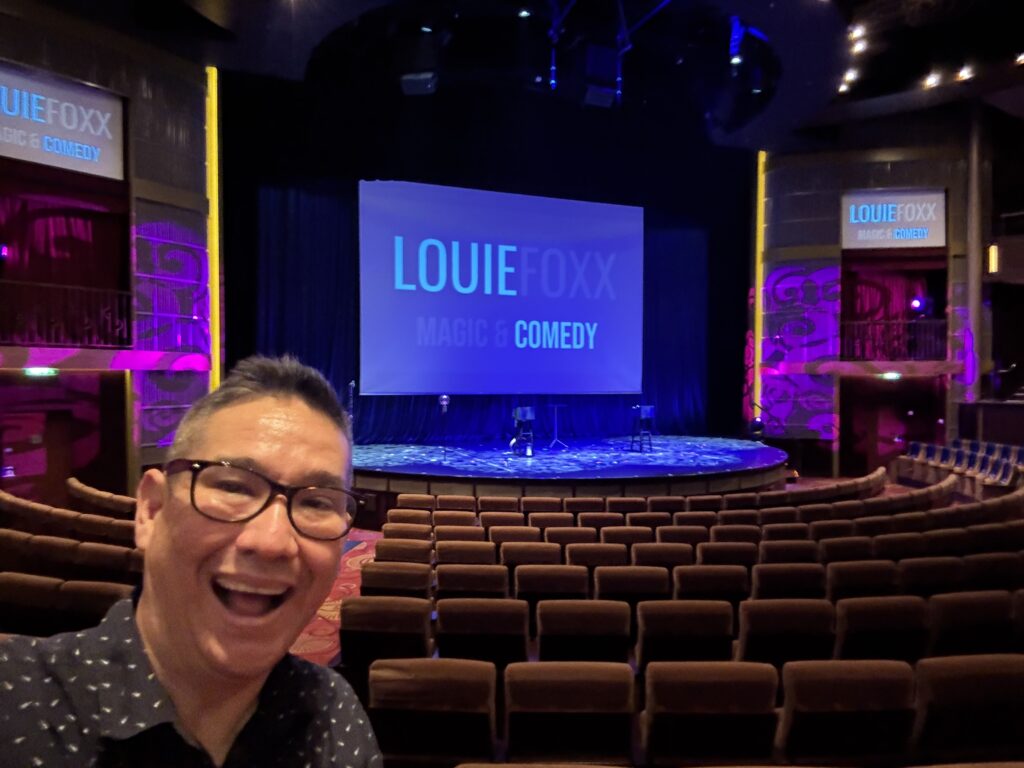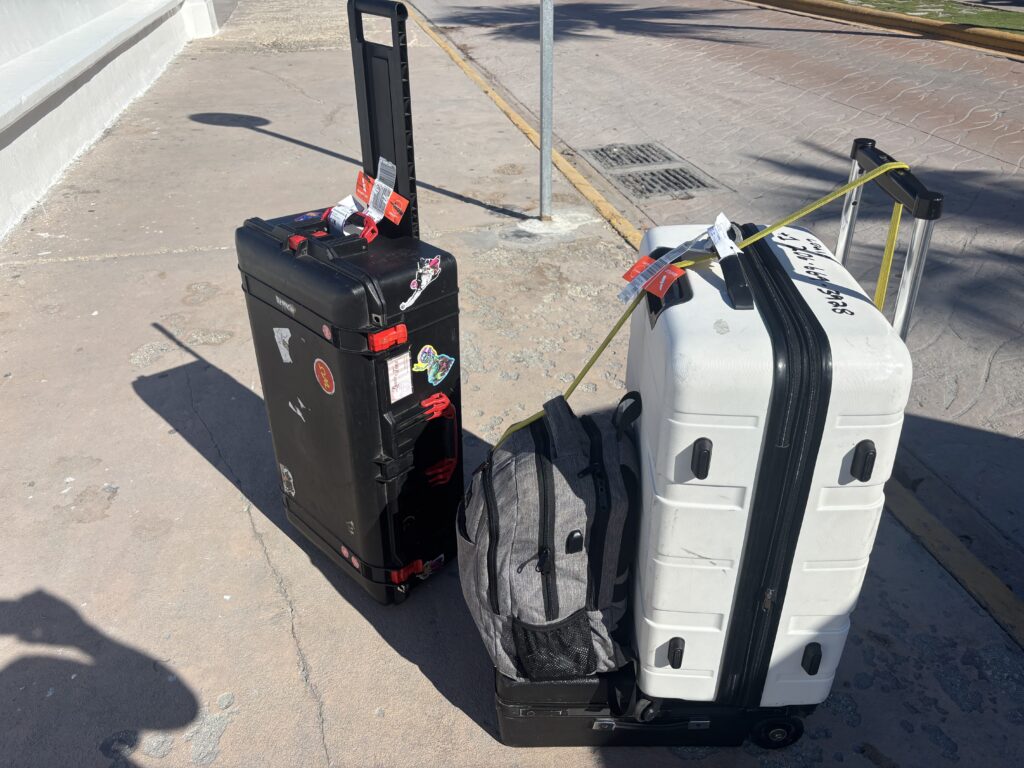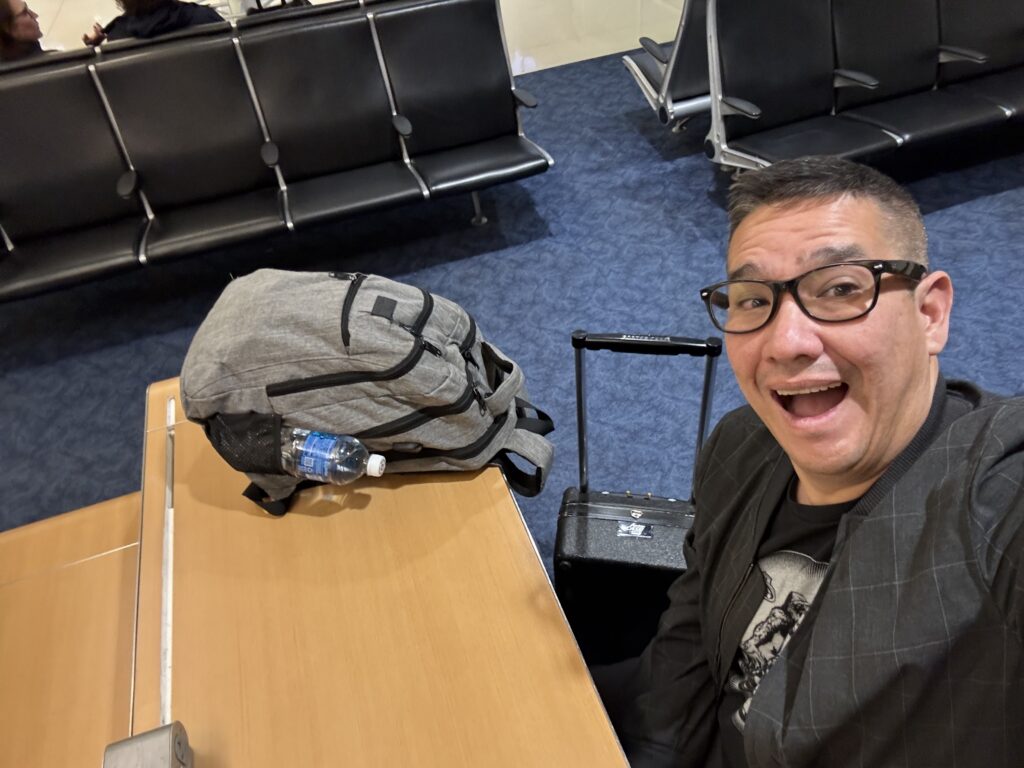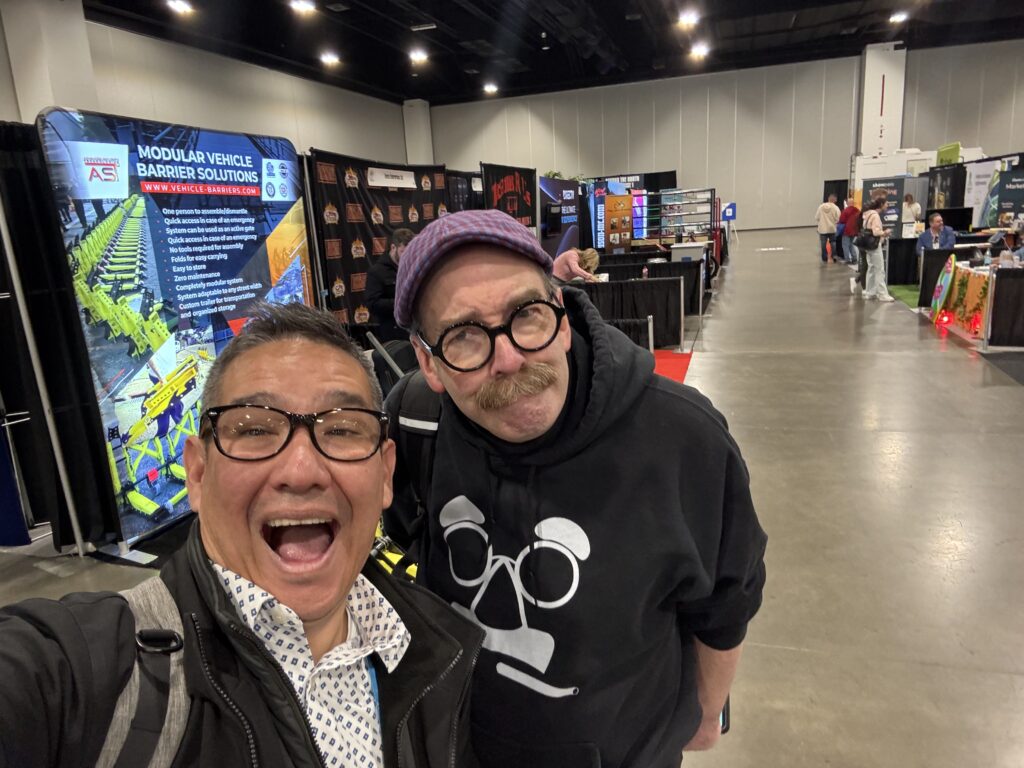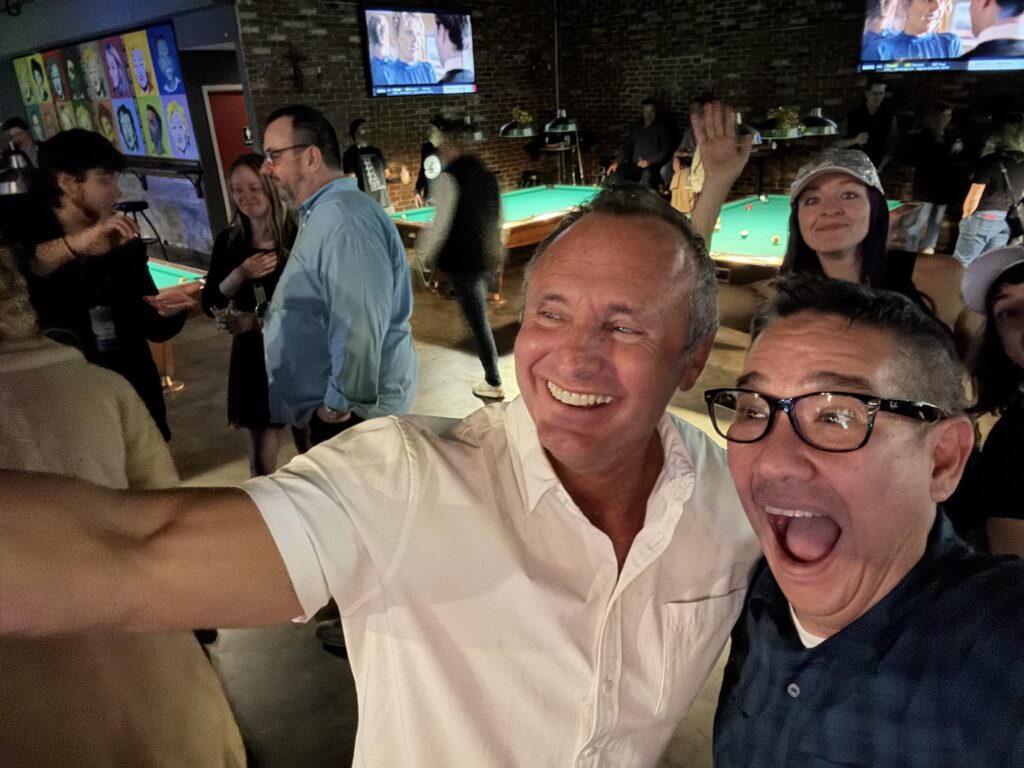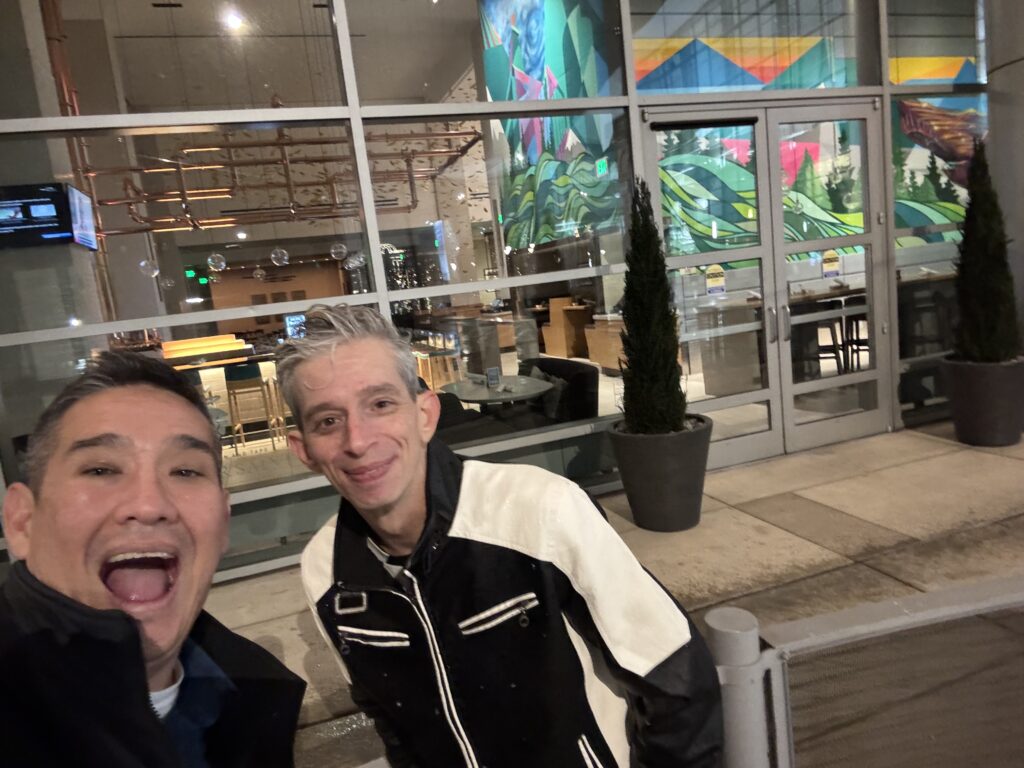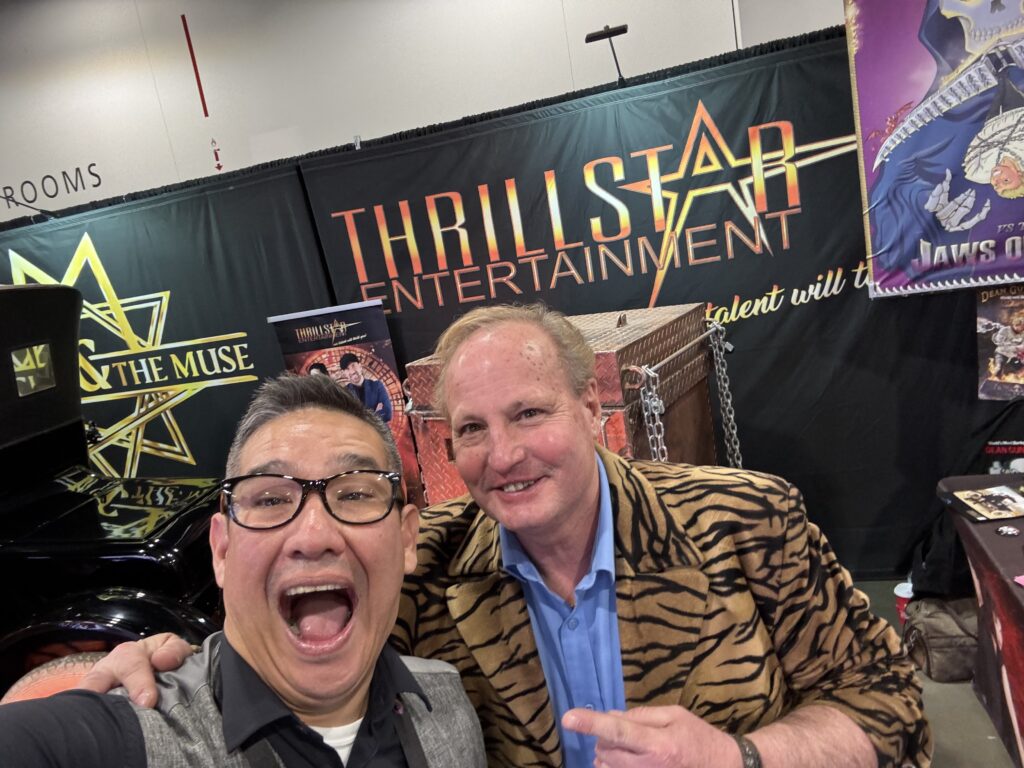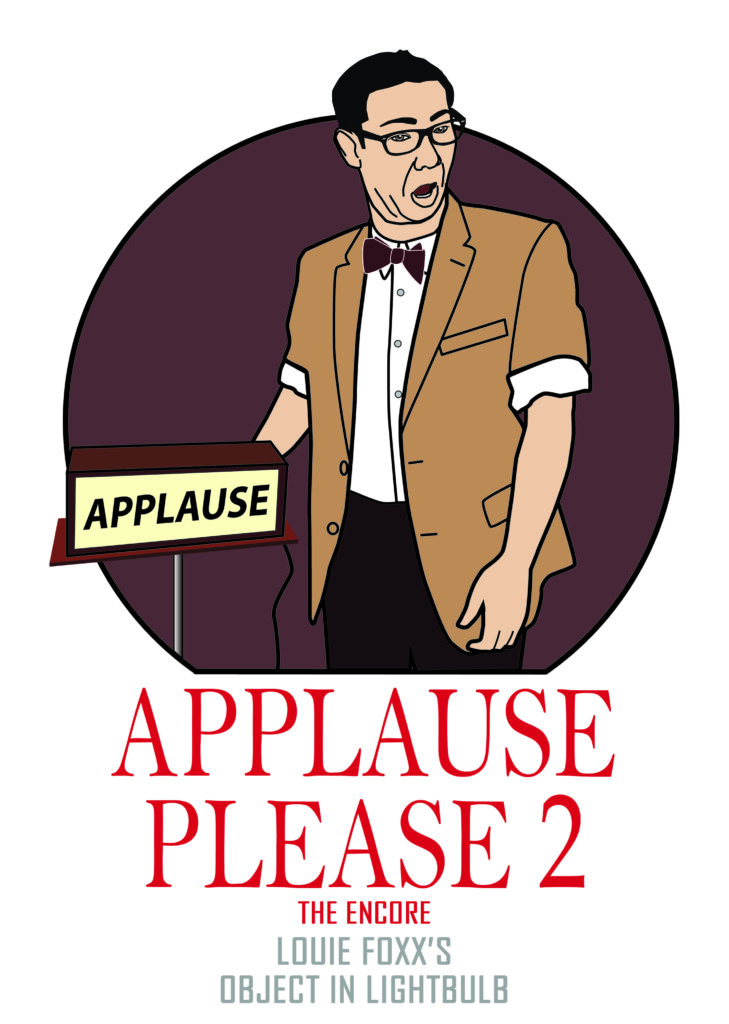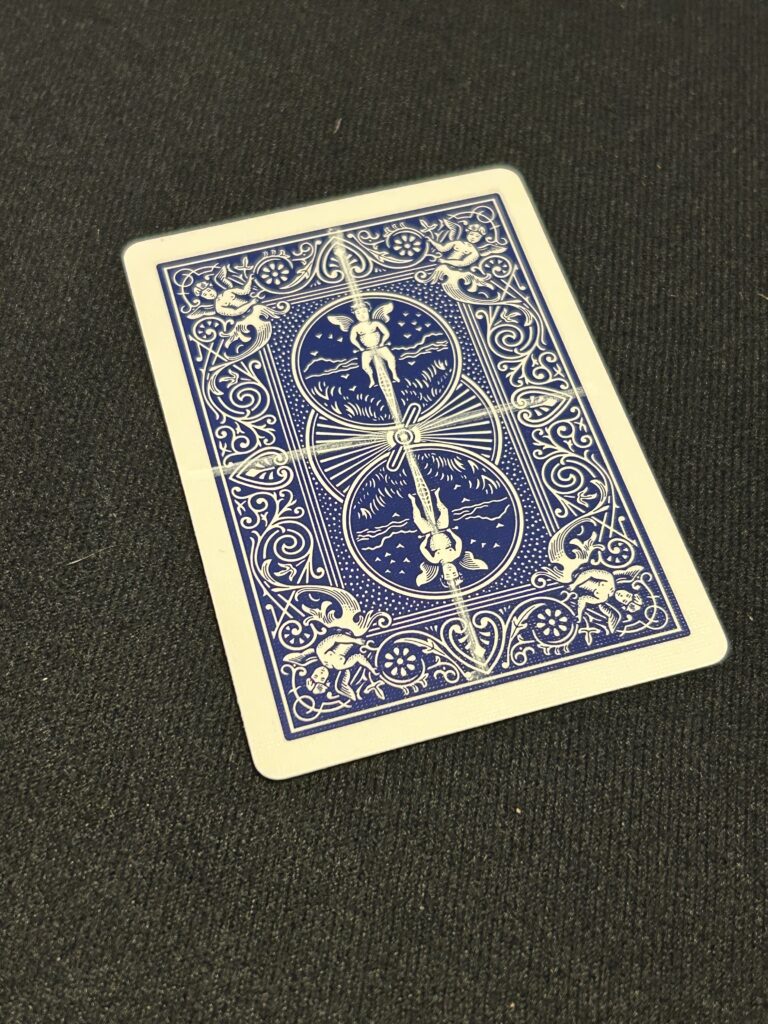My show last night was on the cruise ship, which was in the lounge. This is a very different feeling from the theater, but a lot of fun and more intimate. On this particular cruise line, I’m supposed to have two different 45-minute shows, so for the lounge, I did the show that I didn’t do in the theater the night before.

This show had a segment of close-up magic with the camera. Usually, I use the camera to enhance smaller things that I hold, but not to show the tabletop. For this show, I did a short sequence on the table top. The rest of the show was routines that played bigger. I remember reading somewhere about making your show big, and it went something like this:
“When it’s close up, go parlor, when it’s parlor, go stage and when it’s stage go stadium.”
I closed the show with my book test, which ended with a two-phase banner reveal. The banner is 24 inches tall and about 20 feet long; it fills the space!
Last night was also the end of that particular cruise’s itinerary. I joined the ship midway through the itinerary, so I had to get up early this morning to clear immigration. As part of this process, because of the manifest I was on, I had to leave the ship for a few hours. I had the honor of being the first person off the ship…exciting!

I’m actually writing the post at a coffee shop before I can get back onto the ship.
-Louie
